Recollections of the Past 30 years pursuing Coelacanths
Jerome Hamlin, creator dinofish.com
Meanwhile, things were heating up in South Africa. JLB Smith writing in "Old Fourlegs," his coelacanth account, had metioned unverified rumors of coelacanth carcasses found here and there along the South African coast. But following the 1938 trawling of the first specimen off East London, none had ever turned up again in South Africa. A search in the 90's by the Jago submersible off the East London coast at the 1938 trawl location, revealed a flat bottom nothing like the coelacanth habitat at the Comoros. The 1938 trawl was assumed to be a stray from the Comoros. But rumors persisted, and in 2000, divers going deep had found them along ledges in the canyons off Sodwana in what was already a natural park preserve area.
Coelie fever gripped South Africa anew with the fresh discovery, and this had wide ranging implications. The coelacanth oxygen was sucked out of both Indonesia and the Comoros. The discovery team moved to exploit their good fortune with an internet pay per view live stream (or almost live) of a new dive to the location of the find. The filmmaker of the NOVA show provided some assistance to obtain footage no longer available from Hans Fricke. Their dive was succesful, but the exploitation of the fish annoyed park authorities so that further diving permits were denied for some time to come.
In Grahamstown (now Makhanda), the JLB Smith Institute (now renamed The South African Institute for Aquatic Biodiversity), snapped to and coordinated a fund raising campaign from corporate sponsors that resulted in a new research and educational program that would move the story forward for several years. The Jago submersible and Fricke Dive Team were hired to make a series of research dives at Sodwana, counting and identifying specimens. Hans, who had commented he did not wish to repeat his Indonesia experience, and instead stay focused on the Comoros, was back at it in yet another new home of the coelacanth. Eventually, the South Africans had their own ROV to continue research. A dozen or more fish were observed and identitfied, some even given names. Deep technical diving resumed on a strict permit basis- with collecting out of the question. As all the name changes would hint, South Africa had undergone a massive political correction since the "old days."
I continued selling T shirts and updating the website. Then in fall 2003, I was invited to another coelacanth conference, this one in East London, South Africa. It was a conference to once again bring together the human inhabitants of the coelacanth realm.
Diana and I flew down from New York to the "Coastal and Ocean Exploration Conference." Hans Fricke and Karen Hissman, Mark Erdmann and his wife Arnaz, oceanographer Sylvia Earle, the South African Discovery team, a whole range of marine scientists, Robin Stobbs, Said Ahamada, Rik Nulens coelacanth cataloguer, basically the whole gang, minus a few from the last conference. While the others gave hefty reviews of their work, my paper was simply about the website dinofish.com, which had logged a million views by then. By chance, I believe, Marjorie Courtenay-Latimer in her early 90's decided to attend the afternoon I made my presentation, and so there I was addressing the seminal figure in the coelacanth story! (JLB Smith had died in 1968.) I met her after. She was cordial, maybe a little overwhelmed by the number of people around. She had missed Han's presentation, so he eagerly thrust a copy into her hands for bed time reading.
There were a number of seminars and side meetings as there are at these events. At one Hans proposed using his sub to gently raise a coelaanth from the depths to see how it responded. He was pounced on. No! No! No! Leave them alone. The attituded was distinctly different from the Bali conference.
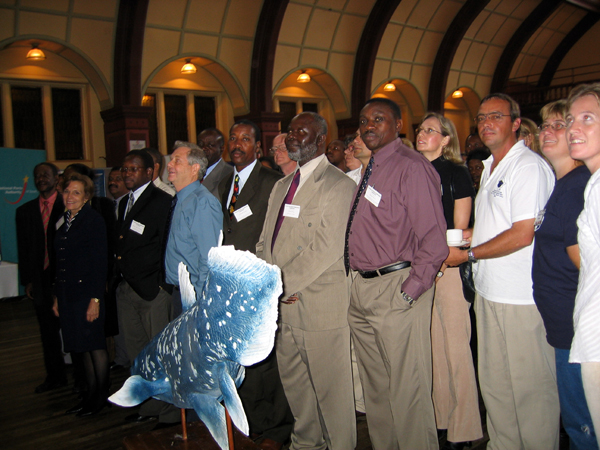
Participants at the conference. We were in an impressive chamber which, however, leaked buckets at the corners when it rained.
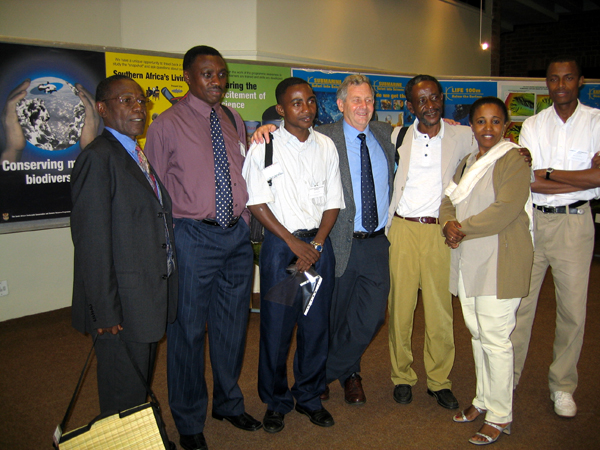
The Comorian delegation with Said Ahamada third from left. The then director of SAIB has his hand on Said's shoulder. Several made presentations.
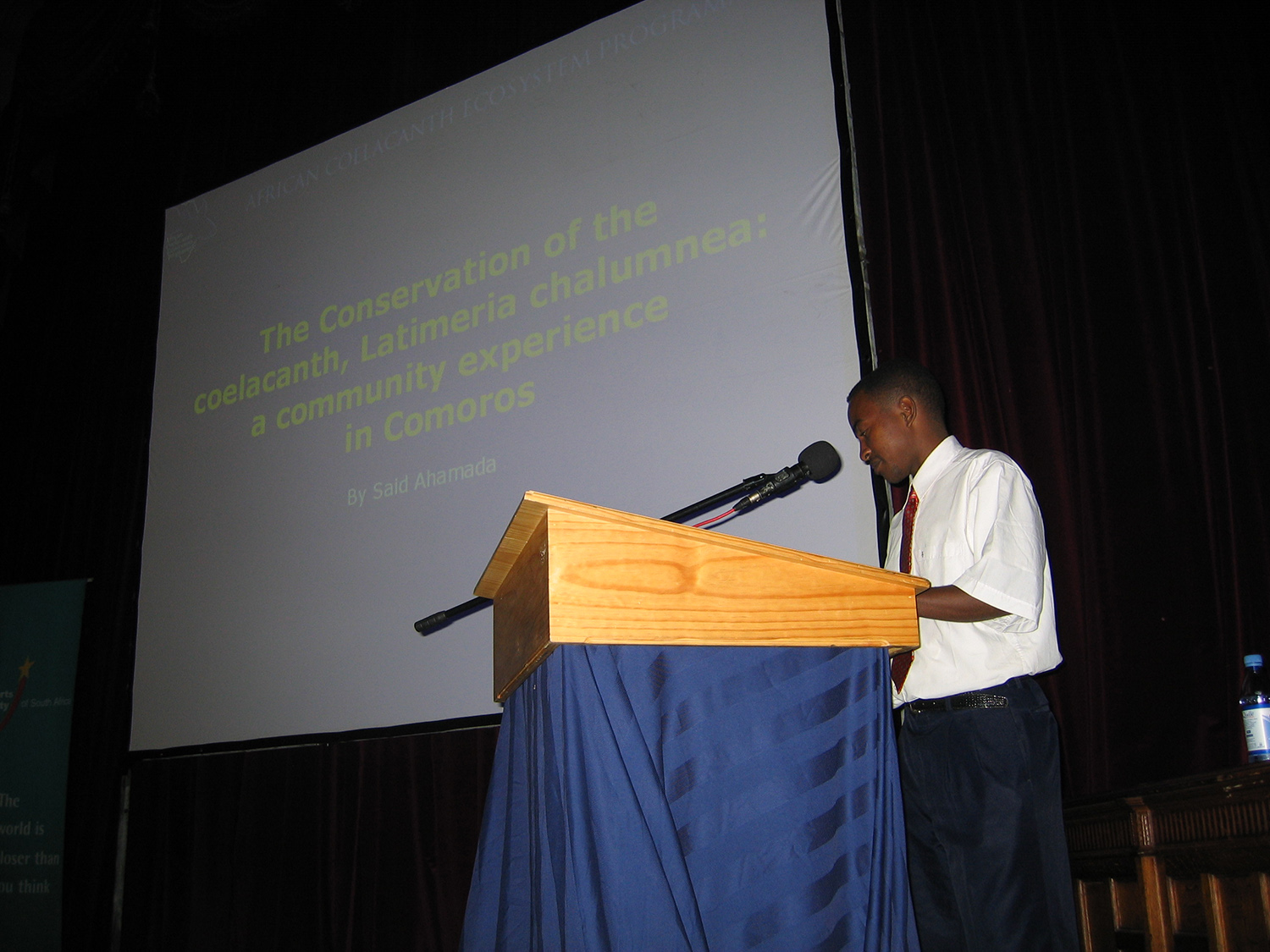
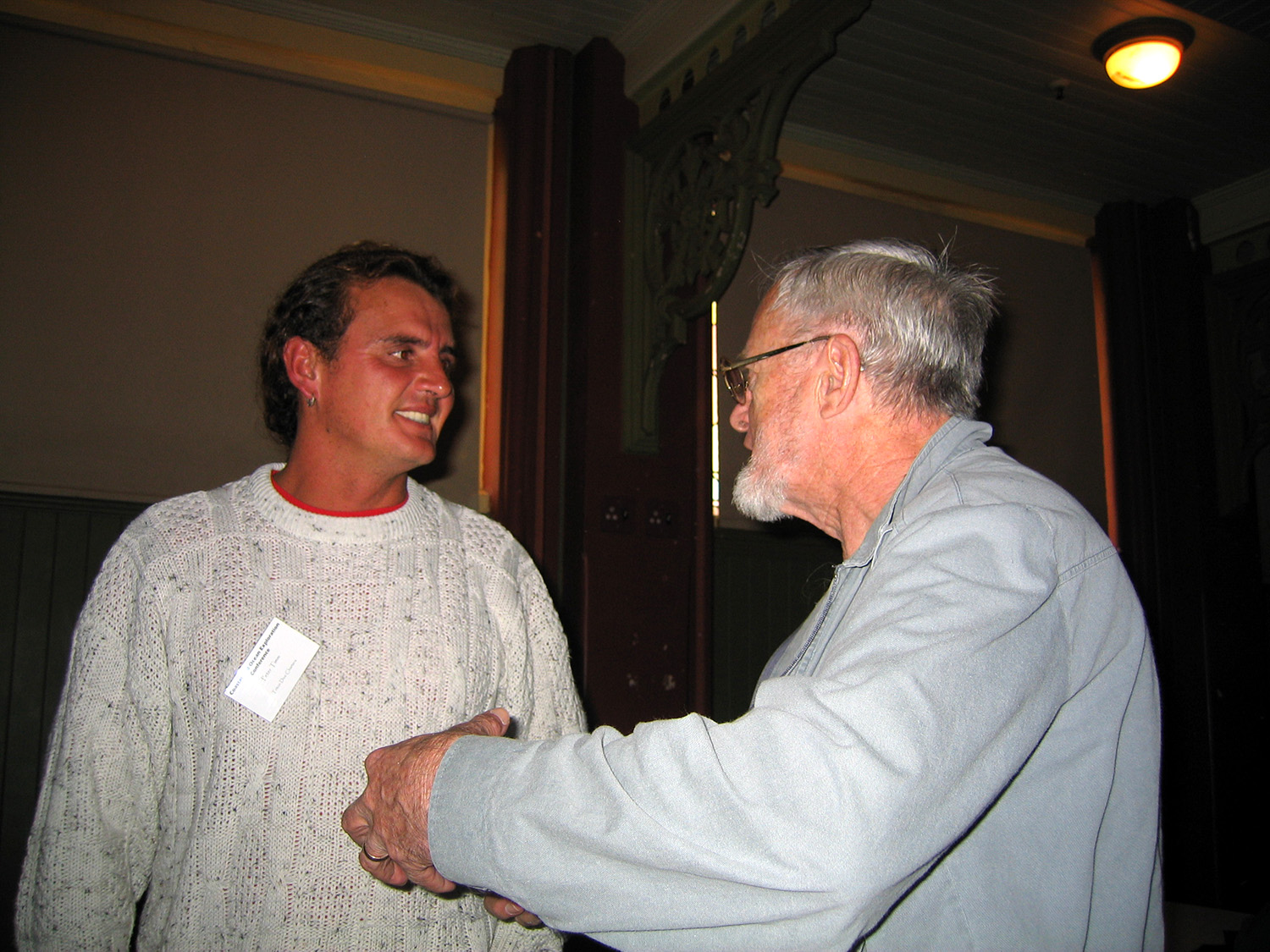
Peter Timm, left co-discoverer of the "new" South African coelacanths, and Robin Stobbs, retired senior tech of the former J.L.B. Smith Institute, and one of the most knowledgeable people in the world on coelacanths and the coelacanth story.
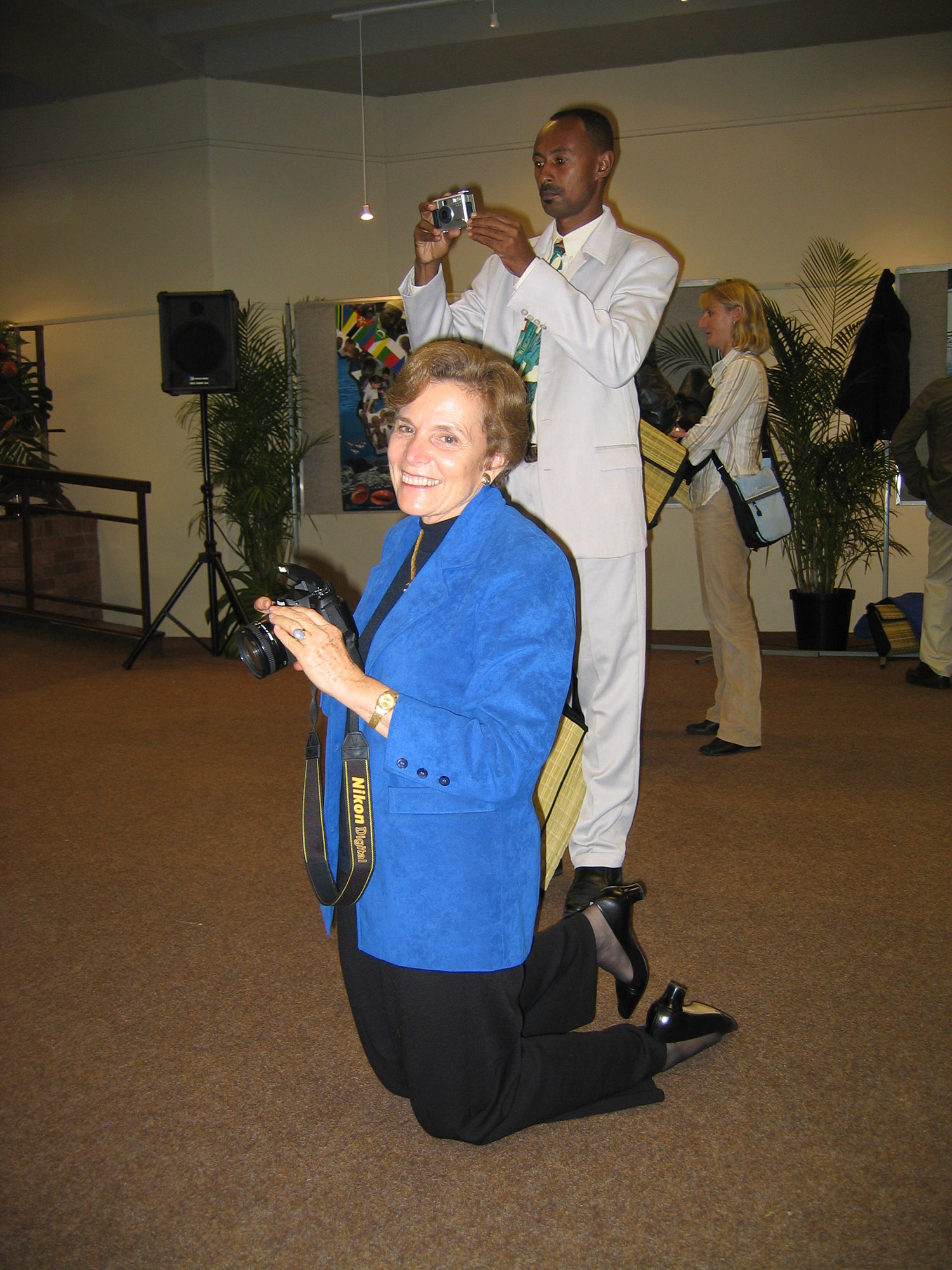
Sylvia Earle (kneeling) gave one of her outstading save the oceans talks. But Hans asked me why she had recently joined the board of an off shore oil company! "To tell them where not to drill," was all I could come up with.

New to this meeting was the multi-millionaire owner of the Fukushima Aquarium in Japan, Abe Yoshitaka. I already had the know, from a chance encounter in Florida a year before, that this aquarium was planning a 7 year program ("C+7") to capture a live coelacanth. A number of experts, including at least two Americans, had attended at his behest, and Diana noted envelopes of cash being distributed to them from an aide. A presentation was made by leading aquarium collector, Forrest Young of Dynasty Marine in Marathon, Florida, where the previous year's conference had been held. Despite the strong anti-capture attitudes expressed at the conference, I knew another well financed effort would soon be underway.
